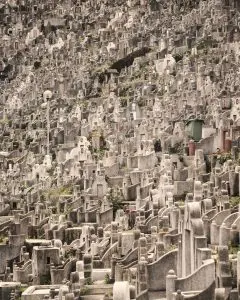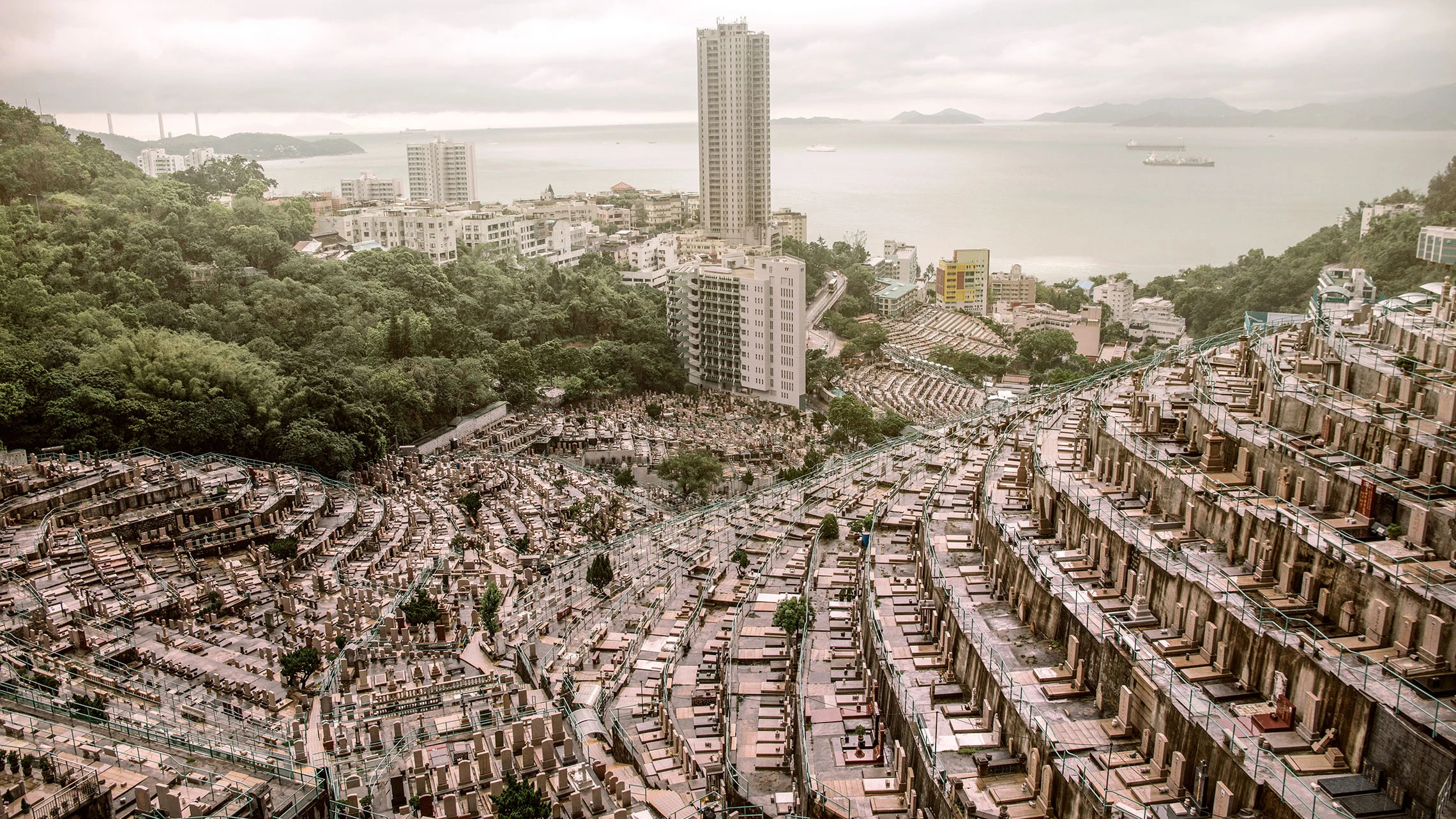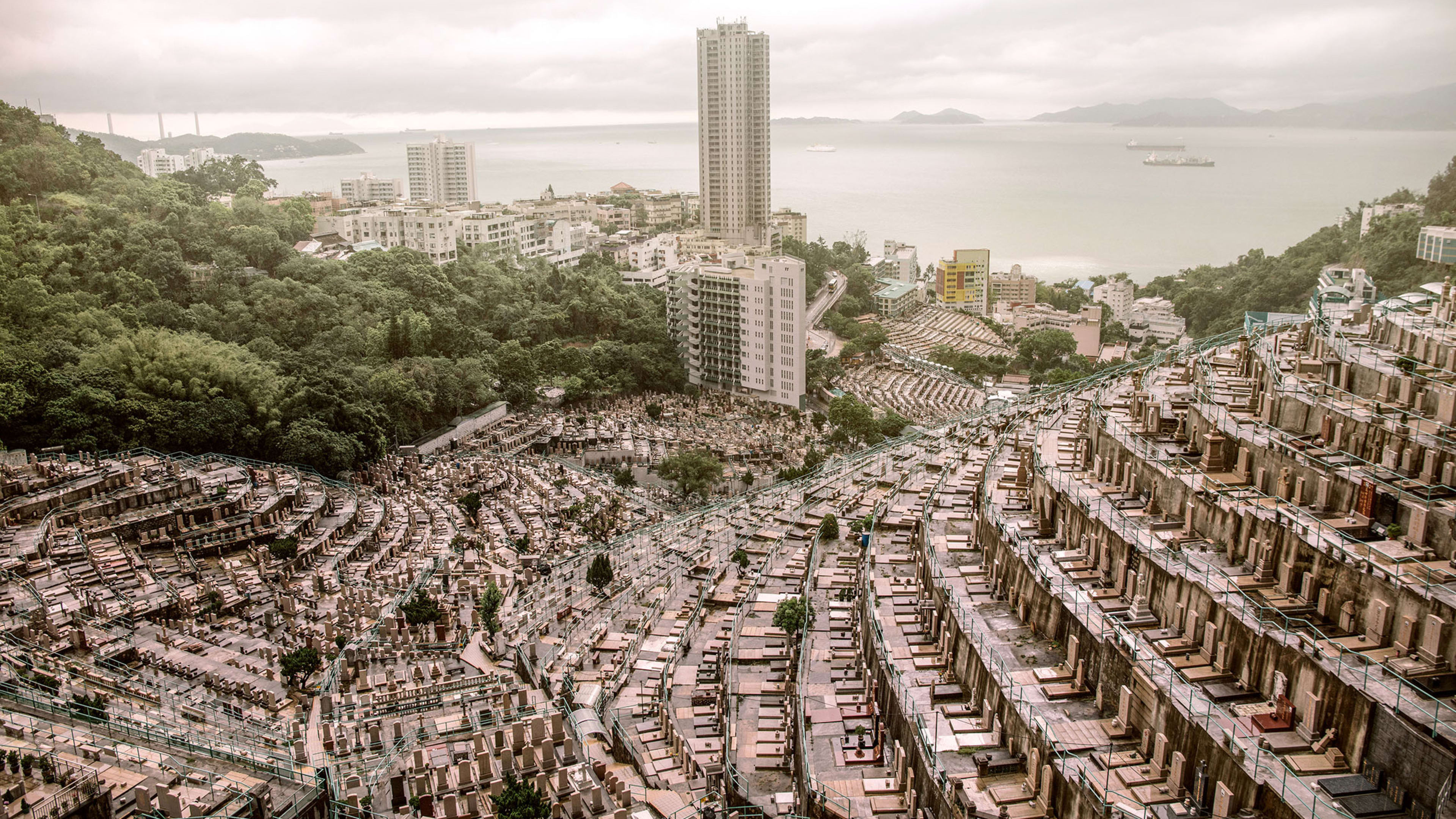In Hong Kong, where urban space is limited, vertically integrated graveyards are common. These final resting places, oriented in tiers, are carved into the city’s steep mountainsides; the result is a hyper-dense architectural landscape with rows of tombstones that cascade like a sloped roof down the island of Hong Kong.

Over the last four years, architectural photographer and designer Finbarr Fallon has documented these terraced graveyards. His photo series Dead Space explores how these monuments are designed, and how their history contrasts with Hong Kong’s more modern developments. “I have always been intrigued by how city-specific cemetery design can be,” Fallon says via email. “While death is universal, its memorialization practices are not. I found it fascinating that extreme density and verticality continue to be a defining characteristic of Hong Kong’s dwellings for both the living and the dead.”
These carefully arranged cemeteries reach heights of up to 60 stories, and offer views over Hong Kong’s residential districts just beyond the mountainside. The island began suffering from land shortages in the late 1970s, so the government banned construction of new, permanent cemeteries in lieu of mass public burial sites. “The images juxtapose residences for two diametrically opposed groups—the high-rises for the living, and graves for the dead,” says Fallon of his photographs. While there is a conceptual tension between both environments, the geometric patterns that are reflected in both the skyscrapers’ gridded details and the cemetery’s uniform tombstones create a shared visual language.
One of Fallon’s most powerful photographs depicts a family scaling the burial terrace to pay their respects, swallowed up by the scale of the cemetery.

One of these private burial plots—whether it’s intended for a member of the elite or less-decorated citizen—can be expensive, commanding prices up to $1.8 million HKD (roughly $230K USD). Because of the financial burden and the shortage of burial space on the island, Hong Kong’s government now advocates for cremation, and for living family members to store the urns of their deceased loved ones in columbaria. As a result, these high-rise graveyards exist as relics of a bygone era—one where equal public space was designated for the living and the dead.
Says Fallon: “In making this series I was interested in showing how death is a key force driving urban morphology: how memorializing people can mean they inadvertently live on to shape the landscape that the living continue to exist in, such that the dead might be said to wield more influence on the city morphology than they did when they were alive.”
Recognize your brand’s excellence by applying to this year’s Brands That Matter Awards before the early-rate deadline, May 3.







